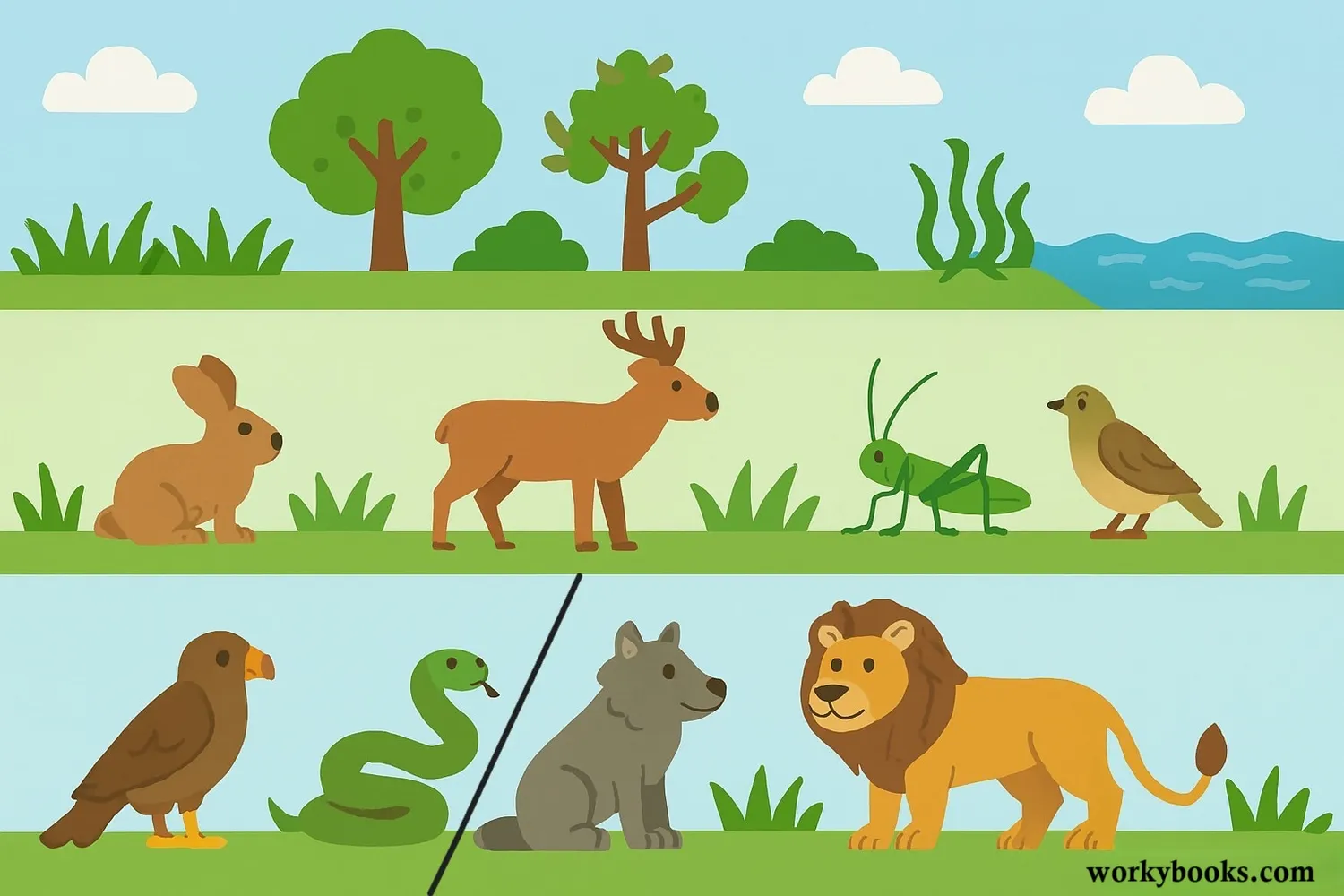Energy Pyramid - Definition, Examples, Quiz, FAQ, Trivia
Discover how energy moves through ecosystems in a pyramid shape!
What is an Energy Pyramid?
0.1% Energy
1% Energy
10% Energy
100% Energy
An energy pyramid is a diagram that shows how energy flows through an ecosystem. It has a pyramid shape because energy decreases as you move up through the levels.
Think of energy like a delicious pizza that gets shared with friends. The first person gets a whole pizza, the next person gets just one slice, and the next gets only a tiny bite! In nature, energy works the same way - there's less available as it moves from plants to animals that eat plants to animals that eat other animals.
Key Point
The energy pyramid shows that most energy is at the bottom with plants, and less energy is available at each higher level.
Trophic Levels in Energy Pyramids

Trophic levels are the feeding positions in a food chain or energy pyramid. Each level represents a step in the transfer of energy:
Producers
Plants and other organisms that make their own food through photosynthesis
Primary Consumers
Herbivores that eat producers (plants)
Secondary Consumers
Carnivores that eat primary consumers
Tertiary Consumers
Top predators that eat secondary consumers
At each trophic level, organisms use most of the energy they consume for living processes like moving, growing, and reproducing. Only a small amount of energy is stored and available to the next level.
Decomposers
Decomposers like bacteria and fungi break down dead organisms at all levels, returning nutrients to the soil for producers to use again.
The 10% Energy Rule
The 10% rule is an important concept in energy pyramids. It states that only about 10% of the energy from one trophic level is transferred to the next level.
This happens because organisms use most of the energy they consume for their own life processes:
- Energy is used for movement, growth, and reproduction
- Some energy is lost as heat
- Not all parts of organisms are eaten or digested
This means if plants capture 1,000 units of energy from the sun, primary consumers (herbivores) only get about 100 units, secondary consumers get about 10 units, and tertiary consumers get only about 1 unit of energy.
Math Connection
If a field of grass contains 10,000 calories of energy, how many calories would a hawk at the fourth trophic level receive? (Answer: about 10 calories)
Examples of Energy Pyramids
Energy pyramids exist in all ecosystems. Here are some examples:
Forest Ecosystem
Producers: Trees, plants
Primary: Deer, rabbits
Secondary: Foxes, snakes
Tertiary: Hawks, owls
Ocean Ecosystem
Producers: Phytoplankton
Primary: Zooplankton
Secondary: Small fish
Tertiary: Sharks, tuna
Grassland Ecosystem
Producers: Grass
Primary: Grasshoppers
Secondary: Mice, birds
Tertiary: Snakes, coyotes
In each ecosystem, the pyramid shape stays the same because energy always decreases at each level. This explains why there are fewer top predators than plants in any ecosystem.
Real World Connection
This is why vegetarian diets can support more people than meat-based diets - we get more energy by eating producers directly rather than eating animals that ate plants.
Energy Pyramid Quiz
Test your knowledge about energy pyramids with this quiz! Answer all 5 questions to see how much you've learned.
Frequently Asked Questions
Here are answers to some common questions about energy pyramids:
Fun Energy Pyramid Facts
Discover some amazing facts about energy pyramids!
Energy Loss
If a whale eats 1,000 pounds of krill, it might only gain 100 pounds of body weight because of the 10% rule - the rest is used for energy or lost as waste!
Rainforest Energy
Rainforests have some of the most complex energy pyramids with many layers and thousands of species at each trophic level!
Human Impact
Eating lower on the energy pyramid (more plants, less meat) is better for the environment because it requires less land and resources to produce the same amount of food energy.
Ocean Giants
Whale sharks and blue whales can exist despite being huge because they feed low on the energy pyramid - on plankton and small fish rather than large prey.


